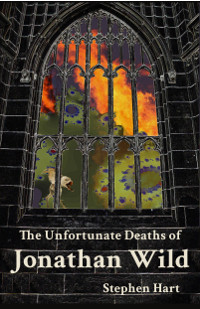TURK'S HEAD COFFEE HOUSE IN CHANGE ALLEY
From The Kingdom's Intelligencer, a weekly paper, published by authority, in 1662, we learn that there had just been opened a "new Coffee-house," with the sign of the Turk's Head, where was sold by retail "the right Coffee-powder," from 4s. to 6s. 8d. per pound; that pounded in a mortar, 2s.; East India berry, 1s. 6d.; and the right Turkie berry, well garbled, at 3s. "The ungarbled for lesse, with directions how to use the same." Also Chocolate at 2s. 6d. per pound; the perfumed from 4s. to 10s.; "also, Sherbets made in Turkie, of lemons, roses, and violets perfumed; and Tea, or Chaa, according to its goodness. The house seal was Morat the Great. Gentlemen customers and acquaintances are (the next New Year's Day) invited to the sign of the Great Turk at this new Coffee-house, where Coffee will be on free cost." The sign was also Morat the Great. Morat figures as a tyrant in Dryden's Aurung Zebe. There is a token of this house, with the Sultan's head, in the Beaufoy collection.
Another token, in the same collection, is of unusual excellence, probably by John Roettier. It has on the obverse, Morat ye Great Men did mee call,—Sultan's head; reverse, Where eare I came I conquered all.—In the field, Coffee, Tobacco, Sherbet, Tea, Chocolat, Retail in Exchange Alee. "The word Tea," says Mr. Burn, "occurs on no other tokens than those issued from 'the Great Turk' Coffee-house, in Exchange-Alley;" in one of its advertisements, 1662, tea is from 6s. to 60s. a pound.
Competition arose. One Constantine Jennings in Threadneedle-street, over against St. Christopher's Church, advertised that coffee, chocolate, sherbet, and tea, the right Turkey berry, may be had as cheap and as good of him as is any where to be had for money; and that people may there be taught to prepare the said liquors gratis.
Pepys, in his Diary, tells, Sept. 25, 1669, of his sending for "a cup of Tea, a China Drink, he had not before tasted." Henry Bennet, Earl of Arlington, about 1666, introduced tea at Court. And, in his Sir Charles Sedley's Mulberry Garden, we are told that "he who wished to be considered a man of fashion always drank wine-and-water at dinner, and a dish of tea afterwards." These details are condensed from Mr. Burn's excellent Beaufoy Catalogue. 2nd edition, 1855.
In Gerard-street, Soho, also, was another Turk's Head Coffee-house, where was held a Turk's Head Society; in 1777, we find Gibbon writing to Garrick: "At this time of year, (Aug. 14,) the Society of the Turk's Head can no longer be addressed as a corporate body, and most of the individual members are probably dispersed: Adam Smith in Scotland; Burke in the shades of Beaconsfield; Fox, the Lord or the devil knows where."
This place was a kind of head-quarters for the Loyal Association during the Rebellion of 1745.
Here was founded "The Literary Club," already described in Vol. I., pp. 204-219.
In 1753, several Artists met at the Turk's Head, and from thence, their Secretary, Mr. F. M. Newton, dated a printed letter to the Artists to form a select body for the Protection and Encouragement of Art. Another Society of Artists met in Peter's-court, St. Martin's-lane, from the year 1739 to 1769. After continued squabbles, which lasted for many years, the principal Artists met together at the Turk's Head, where many others having joined them, they petitioned the King (George III.) to become patron of a Royal Academy of Art. His Majesty consented; and the new Society took a room in Pall Mall, opposite to Market-lane, where they remained until the King, in the year 1771, granted them apartments in Old Somerset House.—J. T. Smith.
The Turk's Head Coffee-house, No. 142, in the Strand, was a favourite supping-house with Dr. Johnson and Boswell, in whose Life of Johnson are several entries, commencing with 1763—"At night, Mr. Johnson and I supped in a private room at the Turk's Head Coffee-house, in the Strand; 'I encourage this house,' said he, 'for the mistress of it is a good civil woman, and has not much business.'" Another entry is—"We concluded the day at the Turk's Head Coffee-house very socially." And, August 3, 1673—"We had our last social meeting at the Turk's Head Coffee-house, before my setting out for foreign parts."
The name was afterwards changed to "The Turk's Head, Canada and Bath Coffee-house," and was a well frequented tavern and hotel: it was taken down, and a very handsome lofty house erected upon the site, at the cost of, we believe, eight thousand pounds; it was opened as a tavern and hotel, but did not long continue.
At the Turk's Head, or Miles's Coffee-house, New Palace-yard, Westminster, the noted Rota Club met, founded by Harrington, in 1659: where was a large oval table, with a passage in the middle, for Miles to deliver his coffee. (See Clubs, Vol. I., pp. 15, 16).
John Timbs
Club Life of London Vol. II
London, 1866

